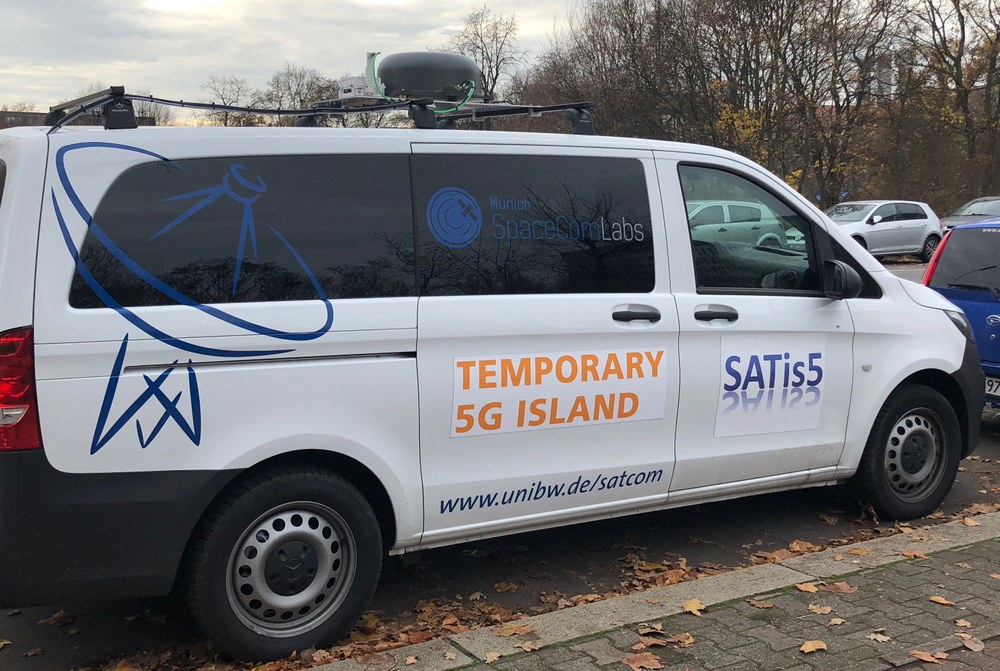Broadband expansion and 5G
More and more users – whether human or machine – are accessing the Internet to share information, which is already pushing networks to their capacity limits. Demand will increase even further in the future: intelligent energy networks will communicate with household appliances to control demand and requirements, local public transport will run at optimally coordinated intervals because buses and trains will be in constant communication with the control centre, the transport infrastructure and other transport users. What once sounded like science fiction will be a reality in the near future.
All those involved in digitalisation must jointly consider what the networks of the future will have to look like in order to meet this demand. Yet the path to this is by no means clear. Which technologies can make what contribution to connecting people and machines today and in the future? Which technologies need to be developed or improved in order to achieve the goal of a networked society quickly and sustainably? However, one thing is clear from these considerations: communications satellites will be an integral part of the networks of the future.
Connectivity everywhere thanks to space
Satellites are playing an increasingly important role in both fixed and mobile networks. They are becoming a key component in improving the security, resilience and flexibility of communication networks. Satellites have become more powerful and flexible in recent years, while the costs of launching and operating them have been reduced. This technology is therefore increasingly being used, particularly in the rapidly changing mobile communications sector.
Satellites as part of the network are a prerequisite for many utilisation scenarios in 5G and 6G. For example, satellites provide connectivity to the most remote areas of the world and offer a redundant communications infrastructure in the event of a disaster. One key application for mobile communications satellites is the connection of remote radio cells to the core network, known as backhaul.
However, satellites can also be used to connect private mobile radio cells, so-called campus networks, to form a large network. This is particularly important for companies operating globally distributed sites in order to connect them securely and easily to the central company network. In future, commercially available 5G-capable end devices, such as smartphones and tablets, will also be able to connect directly to radio cells from space. Low-flying satellites at an altitude of a few hundred kilometres will then serve as 'radio masts'. They will supplement terrestrial mobile communications wherever there are white spots. The initial aim is to make text messages possible, with telephone calls coming later.
Satellite communications are growing together with mobile and fixed networks
To make these and other usage scenarios a reality, the German Space Agency at DLR is supporting various research initiatives such as the ALIX, SATis5 and 5G-METEORS projects as part of its contribution to the European Space Agency (ESA).

The goal of the ALIX project is to help shape the standardisation process for 5G and 6G with the expertise of the aerospace industry. The German partners involved are the Fraunhofer Institute for Integrated Circuits (IIS) in Erlangen and the Fraunhofer Heinrich Hertz Institute (HHI) in Berlin. The ALIX consortium is working with various companies active in mobile communications to develop the standards that will define the way in which the previously separate worlds of mobile and satellite radio will grow together.
The SATis5 project is testing the first applications of mobile communications satellites. Six research institutes and companies from Germany have set up an infrastructure that enables the integration of remote radio cells into the core network. Various applications of satellite backhaul are being experimented with in this testbed. Among other things, researchers are investigating the transmission of live television recordings via 5G and the connection of a mobile 5G radio mast.
5G-METEORS is the first high-tech workshop (makerspace) focussing on 5G satellite integration. Many small developments are intended to advance the integration of satellite and mobile communications. As part of this project, the 5G radio access technology NewRadio was tested for the first time worldwide via a satellite in geostationary orbit (GEO). Another topic is the connection of Internet-of-Things devices via satellites.
Satellites support the expansion of fibre optics
Fibre optic cable, the gold standard of the fixed network, must and should be rolled out to all German households as quickly as possible. However, expansion is slow - not least due to a lack of civil engineering capacity. In addition, fibre optic expansion will probably not be commercially profitable in all areas. Nonetheless, high-speed internet access should be available to all citizens as quickly as possible. Alternative technologies must therefore be used to cover the gap until fibre optic expansion is complete. Communications satellites can help here.
Satellites in geostationary orbit and, more recently, in low Earth orbit (LEO) provide fast and powerful Internet access everywhere in Germany. These can be used to provide connections with download speeds of up to 150 Mbit/s within a very short space of time. As a result, households in the white and grey areas of the fixed network will be able to be part of today's digital society.
The DORF.digital project specifically demonstrates how GEO satellites can contribute here. Over the course of a year, residents of the village of Gruissem in North Rhine-Westphalia will test space internet access free of charge. This will be made available to them via a centralised WLAN network.

